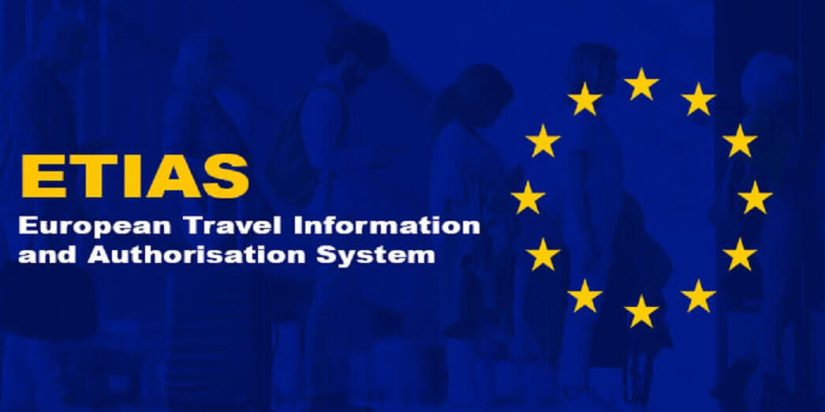Comparing ETIAS With a Visa: What Are the Main Differences
The ETIAS is not a visa. The European Union authorities have repeated it continuously, often offering reasons why this travel requirement for entering the Schengen Area Member States, Bulgaria, Cyprus and Romania for the nationals of over 60 world countries is nowhere near similar to a visa.
Yet, multiple websites and even prestigious media, have frequently over the past years reported that “the ETIAS is a visa” either deliberately, or unwittingly, SchengenVisaInfo.com reports.
“ETIAS is not a visa. Similar travel authorisations for visa-exempt nationals are required by the US, Canada and Australia. Unlike when applying for a visa, travellers will be able to apply for ETIAS online, there is no need to go a Consulate to apply, and biometric data will not be collected as part of the application process,” the EU has noted previously in an article debunking the top myths regarding the ETIAS.
Below, we have listed and explained the top differences between the ETIAS and a visa, that can help our readers differentiate the two.
| ETIAS | Schengen Visa | |
| Application process | Completely online, takes only a few minutes! | Takes weeks, or even months, and includes an appointment made online, and an in-person interview. |
| Appointment/Interview | x | Yes, and should often be made months in advance. |
| Documents required | x | Yes! |
| Fee | €7 | €80 + visa centre processing fees |
| Rejection rate | Under 3% | 18% in 2022 |
| Waiting period for a decision | Typically, within minutes | Usually, 3 to 5 weeks |
| Validity | 3 years | Varies, from a few days, up to five years. |
| Fingerprints / Biometrics | No! | Yes! |
Who Will Need It
The number one difference between an ETIAS and a Schengen visa is who will need the first, and who the second.
While the ETIAS will be required from travellers from over 60 countries, like the UK, US, Canada, New Zealand, etc., who currently can travel completely visa-free, and requirement-free to the EU, a Schengen Visa is required for the nationals of the majority of world countries.
Application Procedures
The application procedures for an ETIAS are pretty simple and quick. It is expected that one application will take around ten minutes.
The form will ask simple questions like the applicant’s name and surname, date and place of birth, citizenship, address, email, phone number, education, work, and questions about the first intended trip to the Schengen Area.
No interview and no documents will be required for obtaining an ETIAS.
“When applying for an ETIAS, travellers will not be required to provide any information related to their health or vaccination status. When applying for ETIAS, travellers will also not be requested to provide any biometric data, such as fingerprints,” the EU explains.
On the other hand, applying for a Schengen visa requires quite a lot more work. First travellers need to make a visa appointment online, for which they often have to wait for weeks due to the absence of available slots. Once they manage to make an appointment then they need to collect several documents for the type of Schengen visa they are applying for (tourism, visiting family, business, etc.).
The list includes documents like travel health insurance, flight itinerary, proof of financial means, etc. The applicant also needs to submit the documents in person at the embassy or visa centre, where the same will also be required to give their fingerprints.
Fee Payment
The difference between an ETIAS fee and a Schengen Visa fee is quite huge. While an ETIAS costs only €7, the fee for a Schengen Visa is more than 11 times higher – €80.
In cases when the applicant is filing the Schengen Visa through a third party to which the Schengen Member has outsourced the admission of visa applications, then an additional fee should also be paid.
These fees range depending on the visa centre, usually around €30. Requesting to receive the passport by mail also has its costs. If the applicant does not want to pay the service, the same will have to go back to the visa centre once the application is fully processed and collect the decision.
On the other hand, the ETIAS admission confirmation will be sent to the applicant’s email as soon as the same is processed.
>> EU’s ETIAS Will Be Cheaper Than Most Existing Travel Authorisations
Waiting Period for a Decision
The EU claims that once the ETIAS becomes effective, most applications will be processed within minutes, sending the applicants the response in their email immediately.
However, only a few applications will take up to 30 days to be processed, in case the EU security systems detect any possible problem with the applicant, that may be considered a possible threat to the EU’s security.
On the other hand, a Schengen visa application may take around 15 working days to be processed as a general rule. Yet, depending on the volume of work for the consulates, it may take even longer.
Validity
The validity of an ETIAS will be three years, or until the applicant’s passport expires. Whichever comes first. All ETIAS authorisations are issued for multiple trips. Travellers can use them as many times as they want, as long as they do not violate the permitted period of stay.
Whereas the validity of a Schengen visa varies from a very few days, up to five years. They may be issued with one single entry, or multiple entries.
Rejection Rates
The rejection rates for a Schengen visa have been continuously growing in the recent years, reaching an all-times high of 17.9 per cent last year.
The rejection rates for an ETIAS, on the other hand, are predicted to be under three per cent.
According to the European Border and Coast Guard Agency (Frontex), 97 per cent of applicants will have their applications processed and approved immediately, while the remaining three per cent will go through several EU security systems like the Schengen Information System (SIS), Visa Information System (VIS) and Entry/Exit System (EES). If no concerns arise that the applicants are a threat to the EU then the same will be approved within minutes.
>> 9 Things You Need to Know About ETIAS Before It Becomes Effective in 2024



